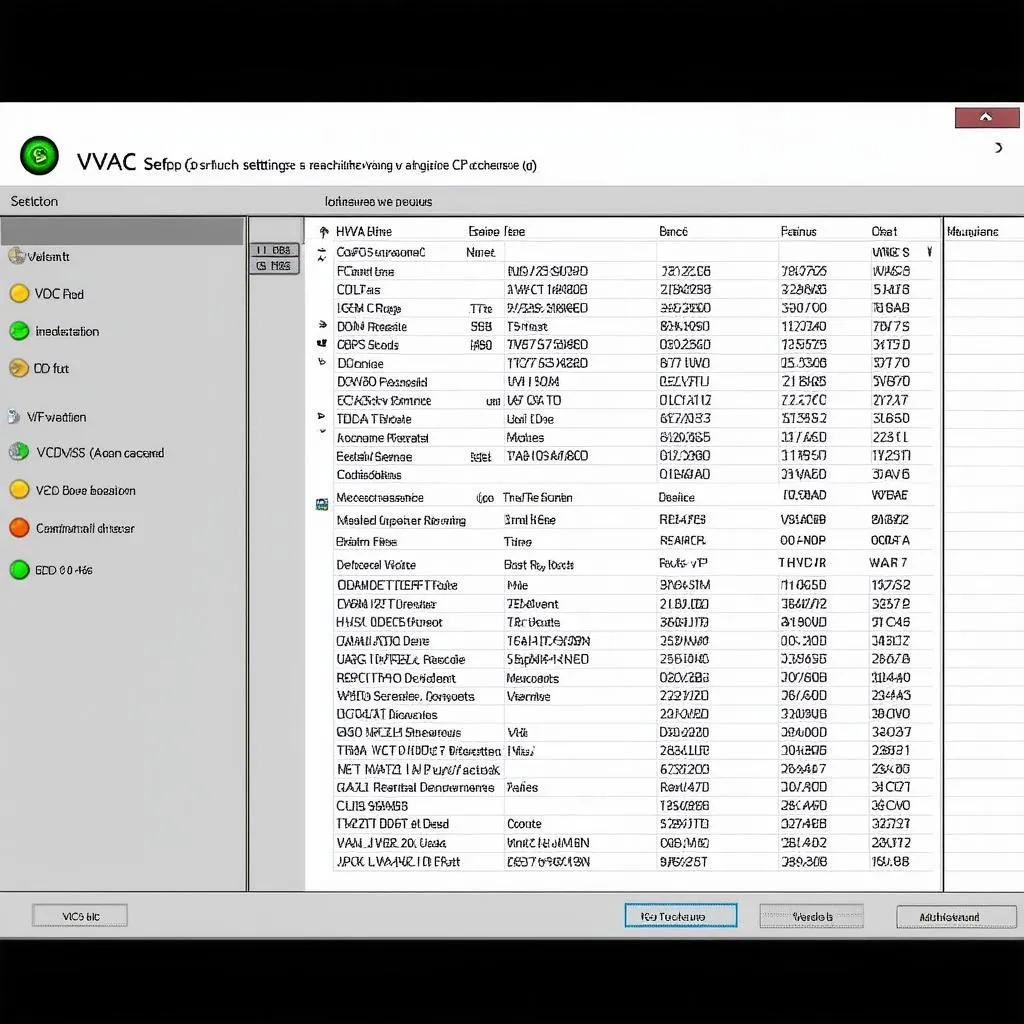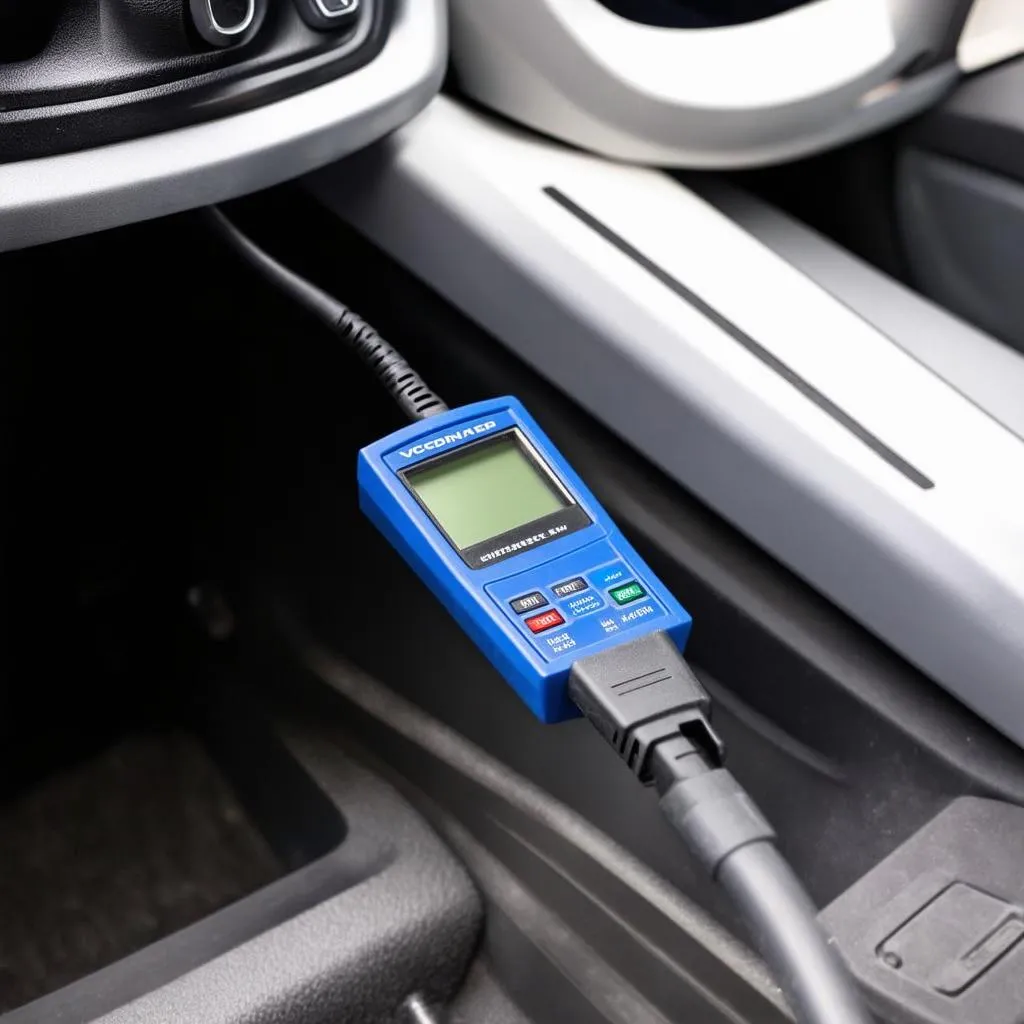VCDS HVAC Adaptation: A Comprehensive Guide for European Car Owners
Have you ever felt the frustration of a malfunctioning HVAC system in your European car? The air conditioning is blowing hot air, the fan is not working properly, or the temperature settings seem to be ignored. These issues can be incredibly frustrating, especially during extreme weather conditions.
Luckily, there’s a powerful tool at your disposal: VCDS, the popular diagnostic tool for European vehicles. With VCDS, you can access and modify various car parameters, including those related to the HVAC system. This is where Vcds Hvac Adaptation comes into play.
Understanding VCDS HVAC Adaptation
VCDS HVAC adaptation refers to the process of adjusting and fine-tuning the HVAC system settings using VCDS. This includes things like:
- Adjusting the temperature control: For example, you can make the AC blow colder or warmer than the default settings.
- Modifying the fan speed: You can set the fan to run at a specific speed or modify the way it responds to temperature changes.
- Controlling the airflow direction: You can adjust the direction of the air flow (e.g., to the face, feet, or windshield).
- Activating or deactivating certain HVAC functions: This could include features like automatic climate control or a rear defrost option.
Why VCDS HVAC Adaptation is Important
There are several reasons why VCDS HVAC adaptation can be beneficial for European car owners:
- Personalized comfort: With VCDS HVAC adaptation, you can customize your car’s HVAC system to suit your personal preferences and driving conditions.
- Troubleshooting and repair: VCDS HVAC adaptation can be used to diagnose and fix common HVAC problems, saving you potential trips to the mechanic.
- Unlocking hidden features: VCDS can sometimes unlock hidden features of your car’s HVAC system that weren’t initially available.
- Improving efficiency: Some VCDS adaptations can actually improve the efficiency of your HVAC system, leading to lower fuel consumption and better overall performance.
VCDS HVAC Adaptation: A Step-by-Step Guide
Please note: Before attempting any VCDS HVAC adaptations, it’s crucial to consult the official VCDS documentation and ensure you understand the potential risks involved.
Step 1: Connect your VCDS cable to your car’s diagnostic port.
Step 2: Open the VCDS software and select your car’s model and year.
Step 3: Navigate to the HVAC module within the VCDS interface. This is typically found in the “Control Modules” section.
Step 4: Locate the specific adaptation values you want to adjust. These values will vary depending on your car’s model and the specific adaptation you’re interested in.
Step 5: Adjust the values as needed. Be cautious and refer to the official VCDS documentation for specific guidance.
Step 6: Save your changes and exit VCDS.
Common VCDS HVAC Adaptations
Some of the most common and useful VCDS HVAC adaptations include:
- Adjusting the thermostat setting: This allows you to control the temperature at which the AC compressor switches on or off, influencing the overall cooling performance.
- Modifying the fan speed: You can customize how the fan reacts to temperature changes, ensuring optimal airflow even in extreme conditions.
- Activating or deactivating automatic climate control: If your car has an automatic climate control system, you can use VCDS to activate or deactivate it depending on your needs.
Tips for VCDS HVAC Adaptation
- Start small: Begin with basic adaptations and gradually work your way to more complex adjustments.
- Take notes: Record the original settings before making any changes. This way, you can revert to the original settings if needed.
- Consult a professional: If you’re unsure about any specific adaptation, it’s always best to consult with a qualified automotive technician.
- Be patient: VCDS adaptation can take some time and practice to master. Don’t get discouraged if you don’t see results immediately.
VCDS HVAC Adaptation: Beyond the Basics
Can I use VCDS for all European cars? VCDS is primarily designed for Volkswagen Group vehicles (Volkswagen, Audi, Skoda, Seat, etc.). However, there are some adaptations that can be applied to other European brands as well, depending on the specific model and year.
What are the potential risks of VCDS HVAC adaptation? While VCDS HVAC adaptation can be beneficial, it’s essential to proceed with caution. Improper adaptation can potentially damage your car’s electrical system or lead to unexpected behavior in the HVAC system. It’s recommended to only make changes that you fully understand and to consult with a professional if you have any doubts.
Is VCDS HVAC adaptation legal? In most cases, VCDS HVAC adaptation is legal. However, it’s important to check your local laws and regulations to ensure you’re complying with all applicable requirements.
Unleashing the Power of VCDS HVAC Adaptation: A Case Study
Imagine John, a European car enthusiast who was having trouble with his Audi’s air conditioning. The AC system was blowing warm air, even when the temperature was set to the coldest setting. John decided to try VCDS HVAC adaptation to troubleshoot the problem.
After connecting VCDS to his car, John accessed the HVAC module and adjusted the thermostat setting to a lower value. To his surprise, this resolved the issue and the AC started blowing cold air again.
“I was so happy! I saved myself a trip to the mechanic and a lot of money,” John exclaimed.
John’s story illustrates the potential of VCDS HVAC adaptation to troubleshoot and fix common HVAC problems. By understanding the basic principles and using VCDS responsibly, you can take control of your car’s climate and enjoy a comfortable ride in all weather conditions.
Frequently Asked Questions
- Q: Can I use VCDS to fix any HVAC issue?
- A: While VCDS is a powerful tool, it may not be able to fix all HVAC problems. For example, if there’s a mechanical issue with the compressor or refrigerant leak, VCDS will not be able to resolve it.
- Q: Is there a specific VCDS setting for improving fuel efficiency?
- A: There are several adaptations that can potentially improve fuel efficiency, including adjusting the fan speed and thermostat setting. However, it’s important to understand that these adaptations may not always be effective and may vary depending on your car model and driving habits.
- Q: Is VCDS HVAC adaptation safe for my car?
- A: As long as you use VCDS correctly and make changes you understand, it should be safe for your car. However, it’s always best to consult the official documentation and seek professional advice if you have any doubts.
- Q: Can VCDS HVAC adaptation void my car warranty?
- A: This is a complex question and the answer may vary depending on your car’s warranty terms and conditions. It’s best to consult with your car dealership or a qualified technician for specific guidance.
Explore Further:
- [Link to other article on VCDS on cardiagxpert.com]
- [Link to other article on European car maintenance on cardiagxpert.com]
Ready to enhance your European car’s HVAC system with VCDS adaptation? Contact us on WhatsApp: +84767531508. Our team of expert automotive technicians can provide guidance and support for all your VCDS needs.
Let us know your thoughts in the comments below! Have you used VCDS HVAC adaptation before? What are your experiences? Share your stories and insights with the cardiagxpert.com community!
 VCDS HVAC Adaptation Interface
VCDS HVAC Adaptation Interface
 European Car HVAC System
European Car HVAC System
 VCDS Diagnostic Tool
VCDS Diagnostic Tool
